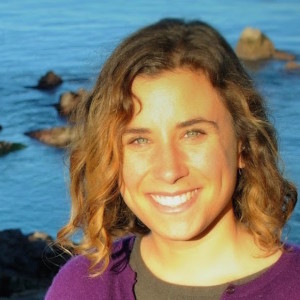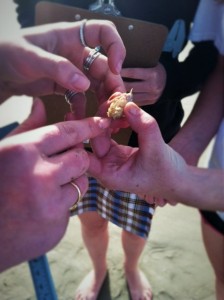by Emily Gottlieb, LiMPETS Coordinator for Central California
How does a sea anemone eat? What time of year are the most pacific mole crabs found on the beach? How do you tell the difference between flattened and slender rockweed? These are not questions from last night’s Jeopardy episode or this year’s AP biology test. These are questions that real students ask while they collect real data in the field as part of LiMPETS (Long-term Monitoring Program and Experiential Training for Students). For over ten years, LiMPETS has encouraged scientific inquiry through hands-on science experience, a theme that now beats throughout the NGSS (Next Generation Science Standards).
The Pacific Grove Museum of Natural History has coordinated LiMPETS for the California Central Coast (Davenport to San Simeon) since 2011 as part of the larger LiMPETS network. The network engages approximately 5,500 students and teachers annually monitoring sites from the Sonoma Coast to Los Angeles.
LiMPETS students become citizen scientists by collecting data about the organisms they find in the Sandy Beach or Rocky Intertidal ecosystems – both of which are plentiful along the central coast. Collected data is used by scientists and managers of California’s National Marine Sanctuaries to establish baseline ecological conditions and to track ecosystem changes over time. These student citizen scientists make light work of ecological monitoring by covering more space and visiting sites more frequently than professional monitoring groups. But perhaps the  greatest benefit of LiMPETS is the not the data, but the questions students generate.
greatest benefit of LiMPETS is the not the data, but the questions students generate.
Inquiry abounds as a group of students are huddled around a quadrat counting turban snails or measuring a Pacific Mole Crab, then watching it bury itself back under the sand. Students ask questions of their peers and instructors, write questions down to research when they return to the classroom. Why do some algae have bumps while others are smooth? How do honeycomb tube worms make their homes out of sand? Students leave LiMPETS able to ask deeper questions about the things they study in the classroom because they have seen them and touched them and observed them closely. They leave the program feeling empowered as scientists because the first step in becoming a scientist, is asking a question.

































